Scratching the Surface
The shallow, random roots of an abiding obsession (The Heights of Weird Part 2)
For a sense of where this mess is heading, see my last post: High Weirdness.
“A paranoid is someone who knows a little of what’s going on.” —William S. Burroughs
In the fall of 2013, I took something I rarely did—research—and applied it to something I’d never heard of—cloud seeding.
Opening my laptop the morning of September 17th, I found the internet freaking out. Recent catastrophic rainfall in Colorado had created 1,000 missing persons, killed 10 people, evacuated 18,000, and caused $4 billion in damages. 18 Colorado counties were designated federal disaster areas.
Corporate media outlets called it a “1,000-year flood event,” an “almost unimaginable” volume of rain. The National Weather Service’s own public emergency alert had abandoned even attempting an estimate of the rate of rain dropping on the Rockies the morning of September 12, stating simply instead:
“BIBLICAL RAINFALL AMOUNTS REPORTED IN/NEAR THE FOOTHILLS.”
And yet, on the morning of the 17th, according to the paranoid conspiracy bloggers whose ‘news’ articles the Facebook algorithm kept feeding me, the unfathomable rainfall totals in Colorado, which the National Weather Service would later declare “the top weather story of 2010-2019 decade,” were not an anomaly of nature but an object of manufacture. Not even the remarkable ‘Biblical’ modifier could shake the faith of a certain contingent of hardcore Colorado skeptics. According to the bloggers, these “suspicious” storms were actually engineered.
“Is it a coincidence that Boulder happens to be the epicenter for cloud seeding with silver iodide, calcium chloride and other toxic chemicals, including using CO2 to supercool the atmosphere before seeding?”
To my surprise, the paranoid citizens floating this preposterous hypothesis did know at least a little of what was going on.
A brief internet search that morning revealed that cloud seeding was actually something real and something Colorado practiced. In fact, nearly every state in the Western U.S. engaged in cloud seeding to varying degrees throughout the winter months, both from airplanes and ground-based generators. But as an NBC News article published that very morning made clear, the idea that these storms were somehow manmade was, well, insane. NBC quoted Andrew Heymsfield, a senior research scientist at the National Center for Atmospheric Research in Boulder, CO.
“You would have to be seeding over massive areas continuously for this to happen… You cannot create the precipitation we had by cloud seeding. There is no way that man can do that.”
The article referred to a few Colorado ski resorts that still practiced cloud seeding and left it at that. Unlike the blogs it sought to debunk, it made no mention of the history.
Cloud seeding, a weather modification technology that uses silver iodide to bond water molecules in would-be storm clouds, was discovered in 1946 in General Electric’s Schenectady, New York labs by scientist Vincent Schaefer. Later, in a project spearheaded by the CIA, the rainmaking technology was deployed during the Vietnam War to break up Buddhist protests and flood the Ho Chi Minh trail. The $22 million top-secret program, dubbed Project Popeye, was eventually uncovered in 1971 by the journalist Jack Anderson. It continued for several more months until the Pentagon Papers and The New York Times confirmed the story and the military suspended all operations.
Summoned to testify before congress, the scientist behind Project Popeye’s covert cloud seeding operations, Dr. Pierre Saint-Amand, a geophysicist with the United States navy, said bluntly:
“We regard the weather as a weapon. Anything one can use to get his way is a weapon and the weather is as good a one as any.”
—Dr. Pierre Saint Amand
For decades none other than my own accidental home, Los Angeles—a city well accustomed to getting its way1—maintained its own cloud seeding program, the longest running municipal operation in the USA. That is until 1978 when, following the seeding of the San Gabriels, disastrous floods ripped through the city causing $43 million in damages and killing eleven people.
Testifying once more in a 1974 top-secret hearing before the Senate Subcommittee on Oceans and International Environment, Dr. Pierre Saint-Amand emphasized the extreme caution with which his team conducted all cloud seeding tests prior to Project Popeye in Vietnam.
“No untoward incidents have occurred and none are expected because of the care with which we have set up the experiments to preclude excessive precipitation as a result of our efforts.”
Fear of such untoward incidents, whether intentional or otherwise, and unleashed in Laos or Los Angeles, eventually led to a 1978 United Nations Convention on the Prohibition of Military or Any Other Hostile Use of Environmental Modification Techniques, more commonly called ENMOD.
The above random, weird spurt of weather modification research that began for me on September 17, 2013—fascinating and improbable as the information was—probably would never have continued (nor led to an award-winning first book) if the material hadn’t connected to me in some way. Such is the retardant narcissism of the aspiring writer. . . or at least, often, a certain kind of writer.
The truth is I was in grad school at the time. It was my job to study writing. Specifically creative nonfiction writing. The University of Iowa Hawkeyes had lured me out to the cornfields (I’m originally from San Diego) with a scholarship funded by the tax-paying citizens of Iowa, and I took the job seriously. I had a fantasy, common in the program, of emerging from my studies with a major book that might bring even more prestige to that #1 ranked writing program. But very quickly I could see that it was not to be—at least not for me.
Like most of my cohorts, the nonfictional aspect of the world I ostensibly knew the most about was myself, and because research outside this finite area of expertise was often time consuming, difficult, and littered with dead ends, I had elected, like most in my program, to confine the majority of my writing to the limited sphere of my hitherto unheroic twenty-five years. And yet, unlike my more persevering peers, I soon found myself having exhausted my most cherished and squalid traumas.
Midway through my first year, I began to wonder just how long I could go on milking the same sad moments from second grade into mediocre memoir while still calling myself, or ostensibly calling myself, a man. (Often I did wonder if I wasn’t really a butch domme tragically resigned to the bedicked body mother nature had assigned.) And often, killing awful corn whiskey late into the night in one of Iowa City’s 387 liquor-licensed establishments, I used to contemplate whether it was worth it to walk out into traffic. A speeding Prius might usher me into a profound near-death experience (NDE). Even if the driver swerved, I could simply keep walking, cross out to the cornfields, maybe catch a bolt of Hawkeye lightning, survive some big Biblical storm sunk in the Monsanto muds, a 1,000-year flood to drown my sorrowful scribblings and brand me with the inspiration of some obscure dimension far beyond the sun-burned boredoms of my banal suburban dawn.
Or maybe not.
At the very least I was horrifically hungover the morning of September 17, 2013, when I started reading about the rains that had days ago decimated Colorado. I point to the booze not because I think doing so might bestow some battered pseudo-edgy alcoholic authenticity à la Charles Bukowski to my otherwise dull, white identity, but rather to merely reinforce the aspect of chance so central to my story.
The fact is there remains simply no way I could have ever started my day—in that glorious bygone era prior to the tyranny of the smart phone—seated before my laptop listlessly clicking content in a kind of proto-doom scroll if I hadn’t first depleted nearly all my will to live. The most I could manage that morning, in a kind of involuntary reflex, too nauseous to even contemplate coffee, was to try and make some kind of contact with the outside world, signal my possible survival by fingering the keys of a nearby machine, and I doubt I would have gone on tapping at the laptop very long, scanning the sudden babble of random conspiracy blogs, if the words “China Lake” hadn’t flashed across the screen.
All the blogs seemed to converge around this out-of-the-way locale.
How weird, I thought, that the weaponization of weather emerged from a place where there effectively was none. How improbable that the military ‘perfected’ rainmaking in a place famously called The Land of Little Rain, and more specifically at a navy base where there was no water, no ocean, no lake.
China Lake was, indeed, the first thing Dr. Pierre Saint-Amand, the navy scientist behind Project Popeye, mentioned in his testimony before the top-secret 1974 senate subcommittee:
Mr. Chairman, distinguished Senators, and guests: My name is Pierre Saint-Amand. I live at 112 Blueridge, China Lake, California.
It was mentioned in the declassified State Department files:
In a March 18 memorandum to Secretary of the Navy Ignatius, Secretary of Defense Robert McNamara. . . noted that the testing of Popeye at the Naval Ordnance Test Station at China Lake demonstrated that it was ‘a potentially powerful weapon against lines of communication in Southeast Asia.’
And it was the repeat mentions of China Lake that communicated to me—the increasingly desperate nonfiction writer—that the paranoia gripping the internet that morning in the wake of the Colorado floods actually connected with my life. . .
If only for a chance moment each summer, driving across California’s Mojave Desert, when I shot passed a certain road sign.
Immediately, in my mind’s yellowed eye, seated before the laptop, I saw its bent and bullet-pocked form standing out above the burrobush, for me always a kind of mystery marker in the badlands between SoCal and the eastern Sierra Nevada (where I worked for the US Forest Service building trails). It stood at the side of Highway 395, just north of Red Mountain, population 19, a town like a permanent horror film set, the ruined homes bolted, boarded up, and backed up into the black mouths of abandoned mines. By the time you made it out of Red Mountain and back out onto the empty Mojave, the car’s speedometer was poking past 100, and whatever burning curiosity those words ‘China Lake’ might have roused as that mile sign flashed by outside was quickly doused by the remembrance of Red Mountain, only then fading in the rearview, and whose bewildering aura of ongoing cannibalistic crimes lingered on long after the crumbling clapboard cottages boiled off into the heat haze behind you.
It almost felt like that’s why the road sign was there—to clear the air, kill off the memory, nudge one along toward a more sanitary and intangible enigma. It didn’t matter who I was with, they always read the words aloud as it whooshed by out the window.
“China Lake. What the fuck is China Lake?” my friend Steven said, squishing a wad of dip down into his lower lip.
Not that he really wanted to know, or I had any intention of turning back, let alone taking any kind of turnoff within ten miles of Red Mountain. Yet for years, driving that eerie stretch of the 395 north of Victorville (itself a town that must make of whoever lives there, at last, a victim), I’d made a mental note to Google ‘China Lake.’ But without fail, five hours later, after I’d finally wandered up the eastern wall of the Sierra Nevada and disappeared into the backcountry of the John Muir Trail, that miserable stretch of highway and its mysterious, trickster-like sign had fully evaporated from my mind.
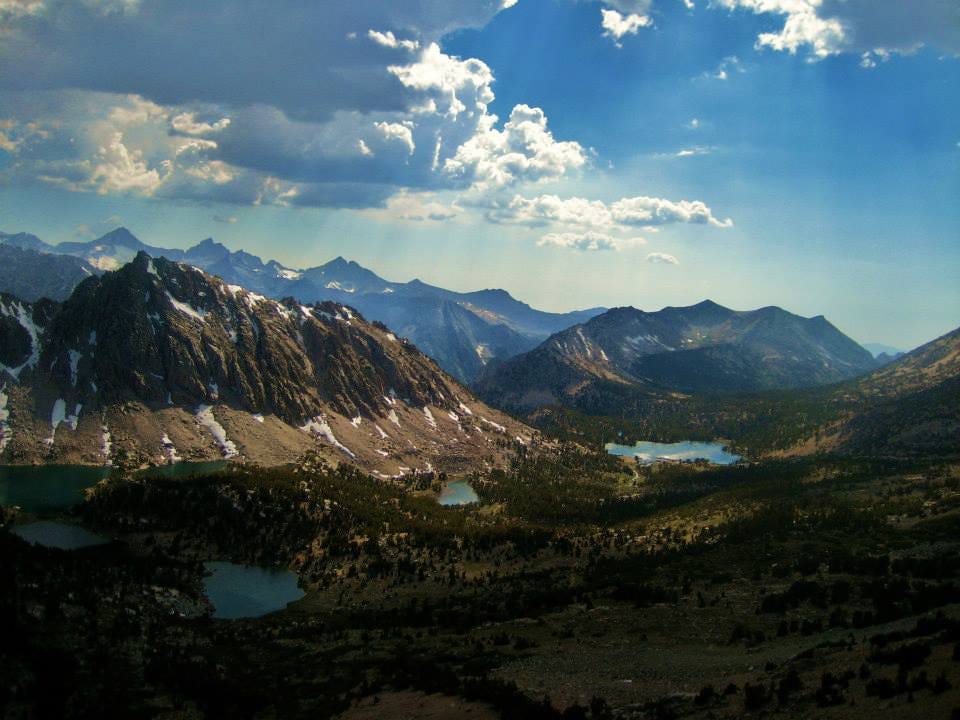
Remember, I’d continue to think with Red Mountain just moments behind me. Remember to look up China Lake.
The name made no sense.
There hadn’t been a body of water in this part of the Mojave since the end of the last ice age. The nearest water source I knew of was Badwater Basin, in Death Valley, the lowest point in the western hemisphere and only a mile or so from the hottest surface temperature reading ever taken on earth. Better to sip your own piss than slurp off the pond at Badwater. It wasn’t a lake nor, properly speaking, really water. And as far as the eye could see nothing out here spoke Chinese. If the red rocks and crumbling volcanic crags had anything to articulate it seemed to be but our very temporary and privileged appearance on a planet perhaps more ancient and alien than Mars.
China Lake?
At least the volcanic hills behind Red Mountain were red. The red of sundried blood. Of great crimes lying unconcealed. Generations of unrelieved agony painted all about those empty mine shafts echoing off into a past rich with copper, silver, and all the abject fathoms of a dark ancestral dread, that sneaking suspicion, recycled through tired bloodlines, that no amount of gain or wealth could ever fill the black hole of the human self.
Yes. Red Mountain might make you think.
But China Lake? It didn’t conjure shit. That was its genius. The genii of the desert were sitting out there for eons, or at least since the 1940s, waiting for some sad bastard to catch wind of their absurd alchemy. The synchronicities. The occult spells incanted in the endless detonations2 of atomic bombs dumped across the American west. A canyon land whose scarred and weathered face already betrayed abuses light years beyond the greatest ambition of the human race long before it ever dreamt of such cataclysmic vistas, let alone planting a flag, lifting a rifle, or installing stoplights.
China Lake. When those words popped up on all the paranoid blogs, it felt like a sign.
Mr. Chairman, distinguished Senators, and guests: My name is Pierre Saint-Amand. I live at 112 Blueridge, China Lake, California. A substantial portion of the critical scientific theory was developed at NWC…
And that morning, back in Iowa—being several thousand miles from Red Mountain—I decided to follow it. To turn off the main road. Take a closer look. And maybe that was the secret. I didn’t need to wander out into traffic or get struck by lightning to revive my writing. I didn’t need the frequent near-death-experience of two quarts of awful corn whisky to summon some obscure dimension. I just needed to do a little research. Poke around the periphery of my experience. Write about something other than that time ten years ago when my dad dropped me off at Starbucks and then never called me back even though he said he would and I never saw him again.
It is a sign, I thought at last. A sign you must follow. It is finally time to research. . . China Lake!
There was only one problem. I’d already done just that.
The spring before I’d finally gotten around to Googling ‘China Lake’. I submitted the brief prose piece to my grad school writing workshop and the instructor, the famed essayist John D’Agata, he declared it a flop.
It wasn’t finished. It barely scratched the surface.
“You’re smart,” he said, as the other students snickered. “Go deeper.”
At the shallow core of the essay was my shocking discovery, after ten years of inaction before all internet search engines, that this top-secret military base that controlled 12% of California’s air space, China Lake—the navy’s largest worldwide landholding at 1.2 million acres, and perhaps the most advanced weapons research center on the planet—it was also home to the largest concentration of Native American rock art in the western hemisphere.
In fact, there was a single narrow lava canyon hidden somewhere up in the volcanic mountains at the middle of the base in which perhaps 1 million-plus images, most depicting big horn sheep, were scratched into black basalt. Some of these petroglyphs dated back as far as 16,000 years, making them the oldest rock art in the Americas. A single location had quietly unsettled the chronology of the settlement of America. And virtually no one had ever heard of the place, let alone seen it.
With access so restricted, the navy considers the risk of vandalism low and the preservation of the rock art likely. The navy, however, says little about the ultimate preservation of its own operations at China Lake.
Tonight, while the military continues to perfect ever-new systems of defense, unmanned drones that drop bombs accurate to the tee of a safety-pinned burka, lasers powerful enough to suck white lightening from black thunderheads, and Hellfire missiles so smart they can swim through caves in Afghanistan without ever brushing a wall, I find myself pissing in the roadside weeds along the Coso Range, staring out over the trembling grid of Ridgecrest’s sodium streetlamps, picturing the missiles as they glide through the distant canyons, float over mountain arroyos, and plumb the pregnant black caves, never scraping a single mountain sheep horn, never knocking the bow from the hunter’s hands, never touching or injuring a soul, and gazing at the white lights wrapped around the China Lake labs, I wonder who will last longer, us or those carvings, who are we today that protect the traces of past man while, in the same breath, in the same cratered desert, we perfect the art of erasing him from the present? Some of the petroglyphs depict peculiar anthropomorphic creatures, neither man nor animal. Are these nameless beings the last image of our progress, the extraterrestrials we must become in order to escape ourselves?
I wrote those words for my writing workshop, and my professor shot them down.
“Go deeper.”
I figured he was just jealous of the gold I managed to mine from a five-minute Wikipedia dive. He felt like my dad, criticizing my batting stance after I’d hit a home run, except my dad never came to any baseball games, and I never sent a dinger sailing over center field, and I figured I’d never find much more to write about beyond that softcore trauma porn of being dropped off at a strip mall Starbucks forever.
It was strange then, felt significant, when those words ‘China Lake’ resurfaced that September morning on the conspiracy blogs blaming cloud seeding for Colorado’s biblical floods. I’d never seen them appear spontaneously anywhere on earth outside that road sign beyond Red Mountain.
I took it as a sign. . . I still had more to mine. . .
There was the flicker of epiphany at the edge of my perception, a feeling of swift withdrawal from alcohol, adolescence, and common sense as I laid my trembling fingers down upon the laptop, and pressing the scaly codework of keys, like a gambler, or graverobber, prey to some obscure probability or sinister genie, I submitted my bet to the vast desert of the internet. A few fateful words with no guarantee of return. . .
“China Lake petroglyphs meaning”
And striking the enter key with a quaking pinky, I went deeper.

I’m thinking here of the theft of water from the Owens Valley, which allowed Los Angeles to grow initially into the behemoth it is today. A popular expression for this event, in which Los Angeles certainly got its way, and was enabled by the federal government, particularly President Teddy Roosevelt:
“The federal government of the United States held Owens Valley while Los Angeles raped it.”
See Morrow Mayo’s notorious, hard to find history, Los Angeles, published by Knopf, 1933.




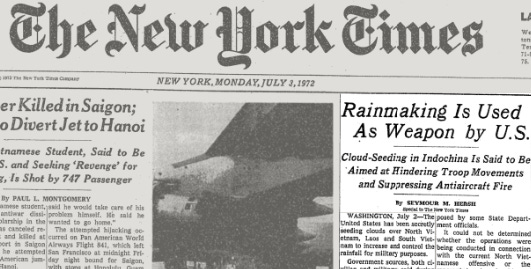
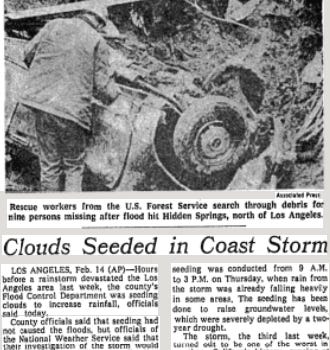
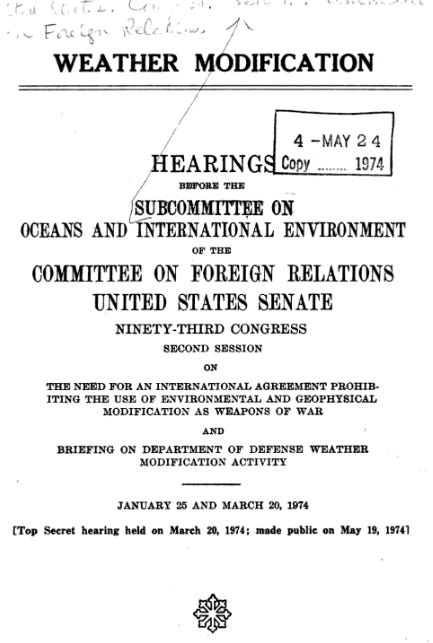

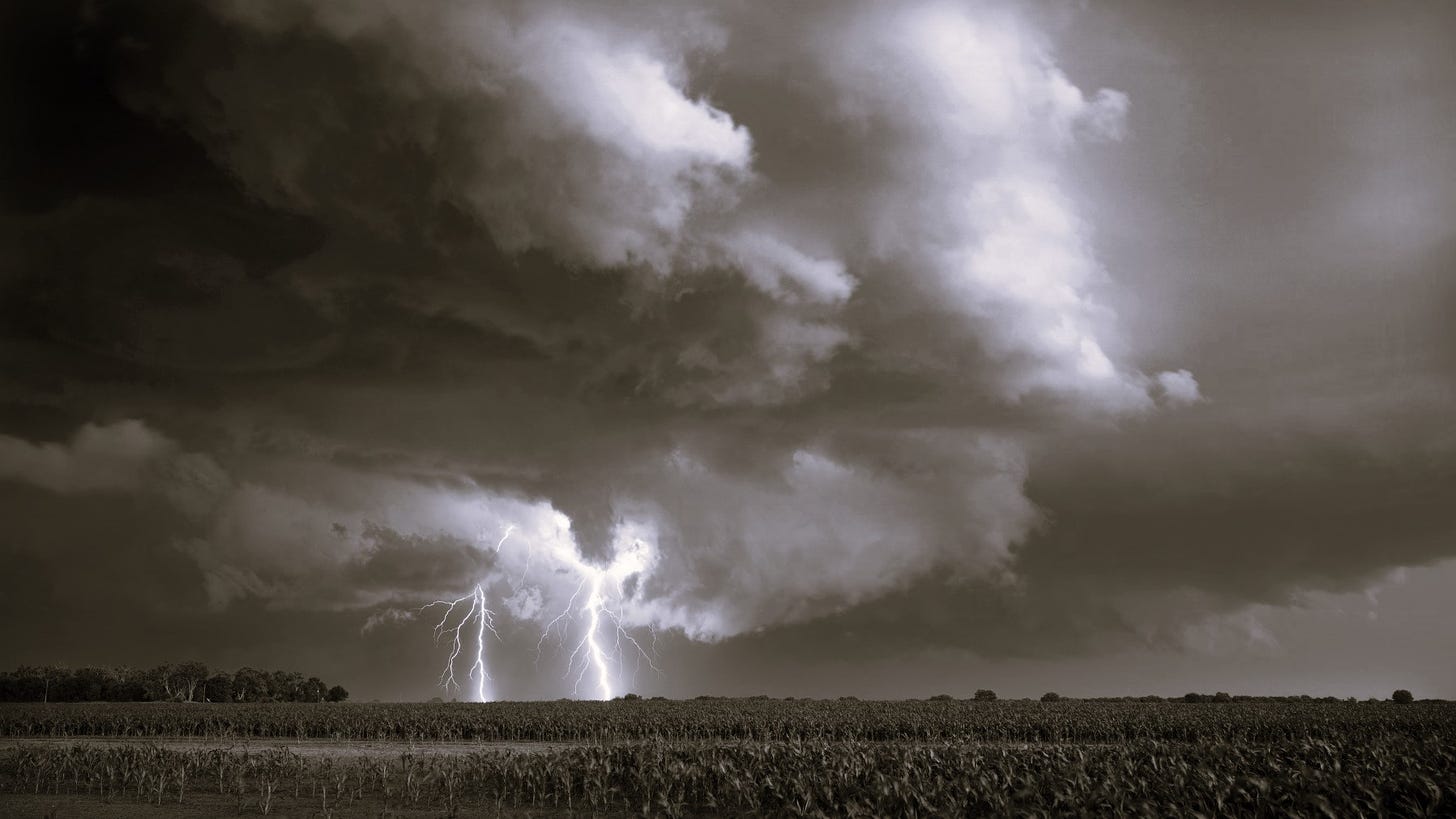

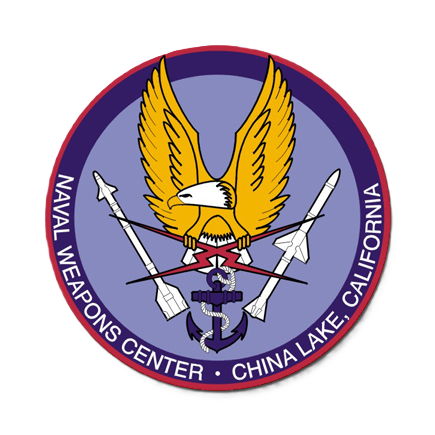

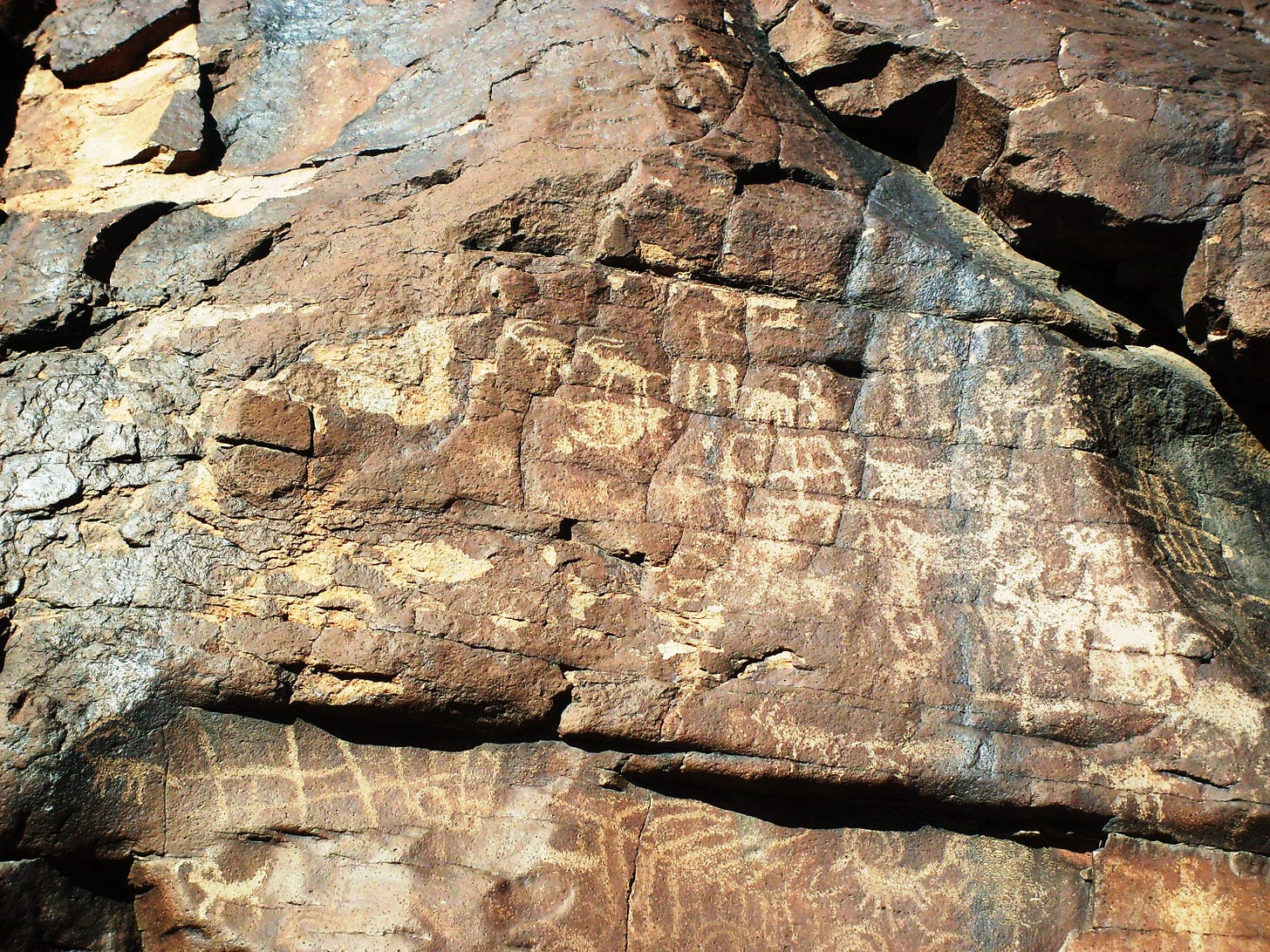
I now imagine an alternate universe where the Death Valley Germans actually reached the borders of a military base just to find out it’s raining in the middle of the desert due to cloud seeding. I would believe in God right then and there.
I love the lore of this and it’s a tragedy that the way, extant and degree of depth you’re writing, is utterly, vastly, completely out of whack with 99% of what is written on substack, or the 3 paragraph puff pieces by 25 year old women talking about how they shared a muffin with their dog, and being happy with themselves, that get 300 comments. Have you considered hiking the full JMT? I’d like to do it.